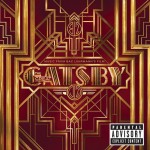Jay Gatsby probably didn’t expect his party music to go from jazz to Jay-Z.
After a hiatus of five years, Baz Luhrmann, the Australian director behind the movies “Moulin Rouge!” and “Romeo + Juliet,” is back on the scene with his latest film, a hip-hop influenced adaptation of F. Scott Fitzgerald’s novel “The Great Gatsby.”
Produced by rapper Jay-Z, the soundtrack includes music from contemporary artists such as Lana Del Rey, Beyoncé, Florence + the Machine and The xx that, at first listen, doesn’t match up with the time period. The collection of tracks signals an unusual departure from the jazz sound traditionally associated with the 1920s, but has the potential to serve as a decent complement to the storyline of “The Great Gatsby” through its depictions of glamorous lifestyles and their bitter ends.
The opening track, titled “100$ Bill” and performed by Jay-Z, begins with random bits of Leonardo DiCaprio’s dialogue from the movie overlaid with Jay-Z’s raps. Jay-Z discusses the “decade of decadence” that characterized the indulgent, excessive atmosphere of the Roaring ’20s (“Benjamin Franklins filled, folded just for the thrill/ Go numb until I can’t feel”). Although it sounds like another heavily produced song straight off Jay-Z and Kanye West’s 2011 collaborative album “Watch the Throne,” “100$ Bill” is a good start and foreshadows the boisterous party vibe of the film well.
A strong point in the soundtrack is Gotye’s “Hearts A Mess,” a single from his 2006 album “Like Drawing Blood.” The bouncy beat and background music contrast with the emotional lyrics (“Your heart’s a mess/ You won’t admit to it/ It makes no sense”), but blend well to create a longing, desperate mood.
The best track may well be “Back to Black,” a cover of Amy Winehouse’s 2007 hit single performed by Beyoncé and André 3000. With a throbbing dubstep pulse underneath André 3000’s tense singing and Beyoncé’s sultry vocals, the song conveys Winehouse’s pain in the original, albeit in a different genre. Keeping the legacy of the late Winehouse alive through its dark and intense mood, the song is a clear winner.
At points, however, the soundtrack is not without its shortcomings. Continuing the trend of dance and club music, “Bang Bang” by will.i.am and “A Little Party Never Killed Nobody (All We Got),” performed by Fergie, Q-Tip and GoonRock, attempt to blend elements of jazz with modern rap and pop but fall miserably short. The tracks begin on a strong note but quickly lose momentum, as choruses are repeated too many times and riffs are replayed with little variation. Repetitive and tedious, the tracks fade into the background and end the impressive lead set by “100$ Bill” and “Back To Black.”
As the album progresses, the songs become softer and more melancholy. Lana Del Rey’s “Young and Beautiful” and Florence + the Machine’s “Over The Love” signal a sudden shift from the hip-hop vibe of Jay-Z and will.i.am to mournful ballads, perhaps following the storyline as the characters fall into the clutches of extravagance and excess.
In the midst of all the contemporary music, a track titled “Crazy In Love” keeps the spirit of the Roaring ’20s alive through its jazzy vibes. Performed by Emeli Sandé and The Bryan Ferry Orchestra, the song is a jazz cover of Beyoncé’s 2003 hit single and does a decent job of staying true to the original’s mood despite the big band sound. However, the pop vocals of Emeli Sandé are at odds with the rhythmic bluesy vibe and may be unsettling for fans eagerly awaiting the appearance of some real jazz on the soundtrack.
The closing number, “Kill and Run” by Sia, rescues the soundtrack from a long sequence of repetitive tracks that insist on reviving the dance and club vibe. Heartfelt and emotional, Sia’s strong vibrato and intense lyrics (“Kill and run, kill and run/ I’m one of the dirty guns”) provide good closure to a diverse collection of songs.
Although it includes songs from industry heavyweights such as Beyoncé and Florence + the Machine, the soundtrack does a less-than-perfect job in keeping interest alive as it moves from one dubstep-laden song to another. Nevertheless, the soundtrack hits the right notes with “Back To Black” and “Hearts A Mess” and ultimately does well in conveying the glitzy and glamorous party atmosphere characteristic of the Roaring ’20s.
